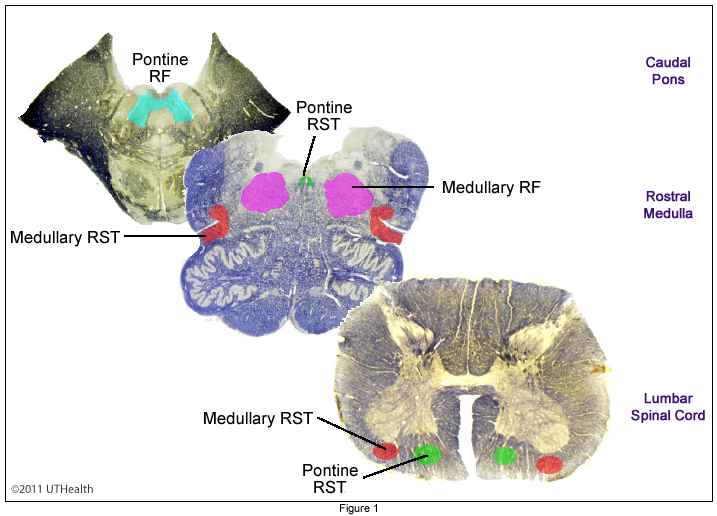Lab 6 (ƒ9) Descending Pathways to the Spinal Cord
Reticulospinal Pathways
The fibers of the pontine reticulospinal tract arise from the pontine reticular formation. The majority remain uncrossed and descend in the medial longitudinal fasciculus, terminating on neurons affecting axial and limb musculature.  This tract extends the entire length of the spinal cord. These reticulospinal fibers facilitate voluntary and reflex responses and influence muscle tone. The pontine reticulospinal tract forms the major descending component of the medial longitudinal fasciculus.
This tract extends the entire length of the spinal cord. These reticulospinal fibers facilitate voluntary and reflex responses and influence muscle tone. The pontine reticulospinal tract forms the major descending component of the medial longitudinal fasciculus.
The medullary reticular formation gives origin to the medullary reticulospinal tract fibers, some of which cross the midline. The crossed and uncrossed fibers pass posterolaterally and take a position lateral to the posterior surface of the inferior olivary complex, near the ascending spinothalamic tract and the descending rubrospinal tract. The bilateral, but mainly uncrossed, medullary reticulospinal tract fibers terminate on neurons at all levels of the spinal cord. The fibers have an inhibitory effect on voluntary and reflex responses of axial and limb muscles.
The pontine and medullary reticular formation receive axons from the cerebral cortex (predominantly from motor and premotor areas), from somatosensory and vestibular structures and from the cerebellum (fastigial nucleus). Both the pontine and medullary reticulospinal tract fibers also influence respiration, sweating, vasomotor responses and other autonomic functions.
